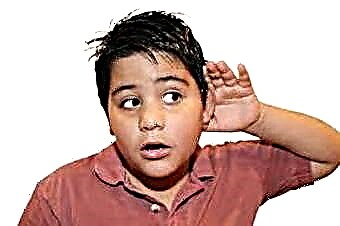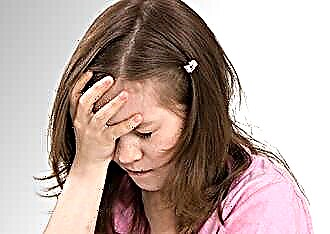Ear pain is one of the most unpleasant, so when a child has an ear pain, parents grab their head - what to do at home to help him? Modern medicine has a wide range of pain relievers that can relieve even severe ear pain. However, relieving pain is not yet a cure. Painful sensations are just a symptom of the disease that makes a person pay attention to the health of the ears.
This is usually a signal indicating an inflammatory process. Inflammation of the ear is called otitis media and can be external, middle, or internal. Ear pain can be caused by other reasons - trauma, eustachitis and even caries. In this article, we will talk about how to determine the cause of the disease if a child has ear pain, and we will tell you how to treat it at home using modern and traditional methods.
Otitis media is a common cause of ear pain
 In most cases, ear pain in an adult or child indicates otitis media. Otitis media - inflammation of the middle ear - develops as a result of the penetration of infectious agents into the tympanic cavity. The causative agents of otitis media can be viruses that cause ARVI, as well as opportunistic bacteria - staphylococcus, streptococcus, E. coli and some others.
In most cases, ear pain in an adult or child indicates otitis media. Otitis media - inflammation of the middle ear - develops as a result of the penetration of infectious agents into the tympanic cavity. The causative agents of otitis media can be viruses that cause ARVI, as well as opportunistic bacteria - staphylococcus, streptococcus, E. coli and some others.
Pathogens spread into the tympanic cavity from the nasopharynx, for example, by blowing the nose. In this case, the channel between the nasopharynx and the ear, the Eustachian tube, becomes inflamed first.
Timely started treatment of eustachitis prevents the development of otitis media.
There are such types of otitis media:
- Otitis media is the most common. With otitis media, the pain is severe, constant, throbbing, or aching. In children suffering from this disease, the body temperature usually rises (can reach 39 C), a headache, weakness appears, and appetite decreases. Hearing may deteriorate (in most cases, reversible). If pus is discharged from the ear, otitis media is called purulent. The discharge of pus indicates that there is a perforation in the tympanic membrane, formed as a result of the pressure of the purulent mass on the membrane. This condition requires urgent treatment. Be careful - many ear drops are contraindicated in patients with purulent ear discharge.
- Otitis externa is an inflammation of the ear canal or auricle. Leaks easier than average. Painful sensations can appear when chewing, talking, yawning. The child may refuse to eat to avoid irritating the pain receptors.
- Otitis media is usually a complication of the middle. Its symptoms:
- hearing impairment;
- noise in ears;
- dizziness;
- nausea and vomiting;
- high body temperature;
- impaired coordination of movements.
Otitis media is a dangerous disease that can result in hearing loss. Self-medication for internal otitis media is unacceptable.
Ear inflammation treatment
How to treat otitis media in a child at home if his ear hurts? In the acute period of the illness, the child needs bed rest. Shown are vasoconstrictor nasal drops (Naphthyzin, Otrivin, etc.) to improve the outflow of mucus and pus from the middle ear cavity into the pharynx. The child should be taught to blow his nose correctly - not to make excessive efforts, alternately to free the nostrils from phlegm.
How to treat a child's ear at home? Since acute otitis media is accompanied by severe pain, it is recommended to use drops for ears with anesthetic effect - Otipax, Anauran, etc. The drops are heated to body temperature and injected into the ear canal, then covering it with cotton wool. If pus is discharged from the ear, the choice of drops requires care. For example, drops of Anauran, boric alcohol and many other drugs are contraindicated in the presence of purulent discharge from the ear canal.
With an increase in body temperature and the presence of other symptoms of intoxication, it is necessary to prescribe systemic antibiotics. Amoxicillin is usually prescribed. The course of treatment is at least 7 days, the dosage depends on the age and weight of the child. If there is no improvement on the 3rd day of treatment, amoxicillin is replaced with augmentin, rulide or spiramycin. During therapy with antibacterial drugs, a sharp improvement in well-being is possible for 3-4 days of treatment (until the end of the prescribed course). At this time, it is very important not to stop taking the drug. Remember that the minimum course of antibiotic therapy is 7 days.
Early refusal to take an antibiotic can lead to a relapse of the disease, as well as the formation of adhesions in the tympanic cavity. This results in permanent hearing impairment.
 How to treat a child's ear at home using folk methods? Traditionally, dry heat is used for otitis media. You can use a bag with heated salt, dry cereals, a heating pad with water. The temperature should be pleasant to the body, not scalding. An alcohol compress applied around the ear also gives a good warming effect. It is important to remember that warming procedures are contraindicated at elevated body temperature and the release of pus from the ear canal. Warming plays the role of adjuvant therapy to alleviate the course of the disease, but it cannot replace the complex therapy of otitis media.
How to treat a child's ear at home using folk methods? Traditionally, dry heat is used for otitis media. You can use a bag with heated salt, dry cereals, a heating pad with water. The temperature should be pleasant to the body, not scalding. An alcohol compress applied around the ear also gives a good warming effect. It is important to remember that warming procedures are contraindicated at elevated body temperature and the release of pus from the ear canal. Warming plays the role of adjuvant therapy to alleviate the course of the disease, but it cannot replace the complex therapy of otitis media.
Other causes of pain
Of course, otitis media is not the only possible cause of ear pain. So, ear pain can be caused by furunculosis, hypothermia, frequent ingress of cold, polluted or chlorinated water into the ear canal (the so-called "swimmer's disease") and other disorders. You should also not exclude the presence of injury in a child who complains of ear pain. A child hitting his head can damage the auricle, the skin of the ear canal, and the eardrum. Careless wax removal can also cause injury. Violation of the integrity of the eardrum is a dangerous condition. The presence of perforation leads to hearing loss, the appearance of tinnitus. If left untreated, the child may be permanently deaf.
Symptoms of violation of the integrity of the tympanic membrane:
- sharp pain in the ear as a result of injury (blow to the head, fall, use of cotton swabs, etc.);
- ear congestion;
- discharge of blood from the ear canal;
- hearing impairment;
- with sudden exhalation, the patient feels that air is coming out of the ear (it is not recommended to use such a test as a diagnostic test - this can lead to infection of the middle ear).
If you suspect damage to the child's eardrum, parents should not apply any drops, ointments, etc. A cotton or gauze swab treated with a small amount of alcohol should be inserted into the ear canal and immediately seek medical attention.
Pain radiating to the ear
The pain "radiating" to the ear can be observed in various conditions:
- sore throat;

- sinusitis;
- laryngitis;
- inflammation of the cranial nerves (glossopharyngeal, trigeminal, vagus);
- arthritis of the joints of the lower jaw;
- inflammation of the lymph nodes in the parotid area;
- sialoadenitis - inflammation of the salivary glands (in children, it is often the first symptom of mumps).
At the same time, painful sensations mimic ear pain, but they are not associated with pathological changes in the organs of hearing. The cause of the radiating pain lies in the spread of a nerve signal from one branch of the nerve to another.
A patient, especially a child, often cannot pinpoint the source of the pain. If within 2-3 days the treatment does not bring results, it is necessary to reconsider the presumptive diagnosis.




